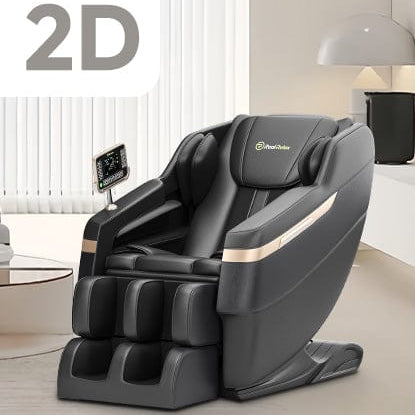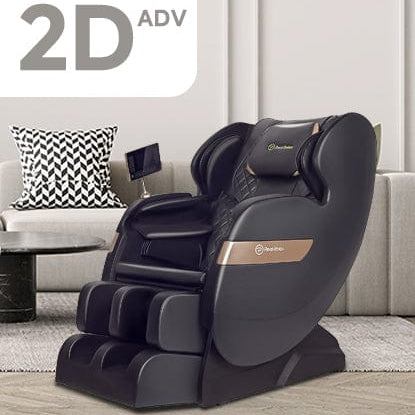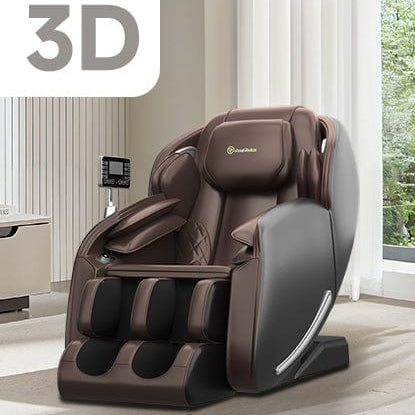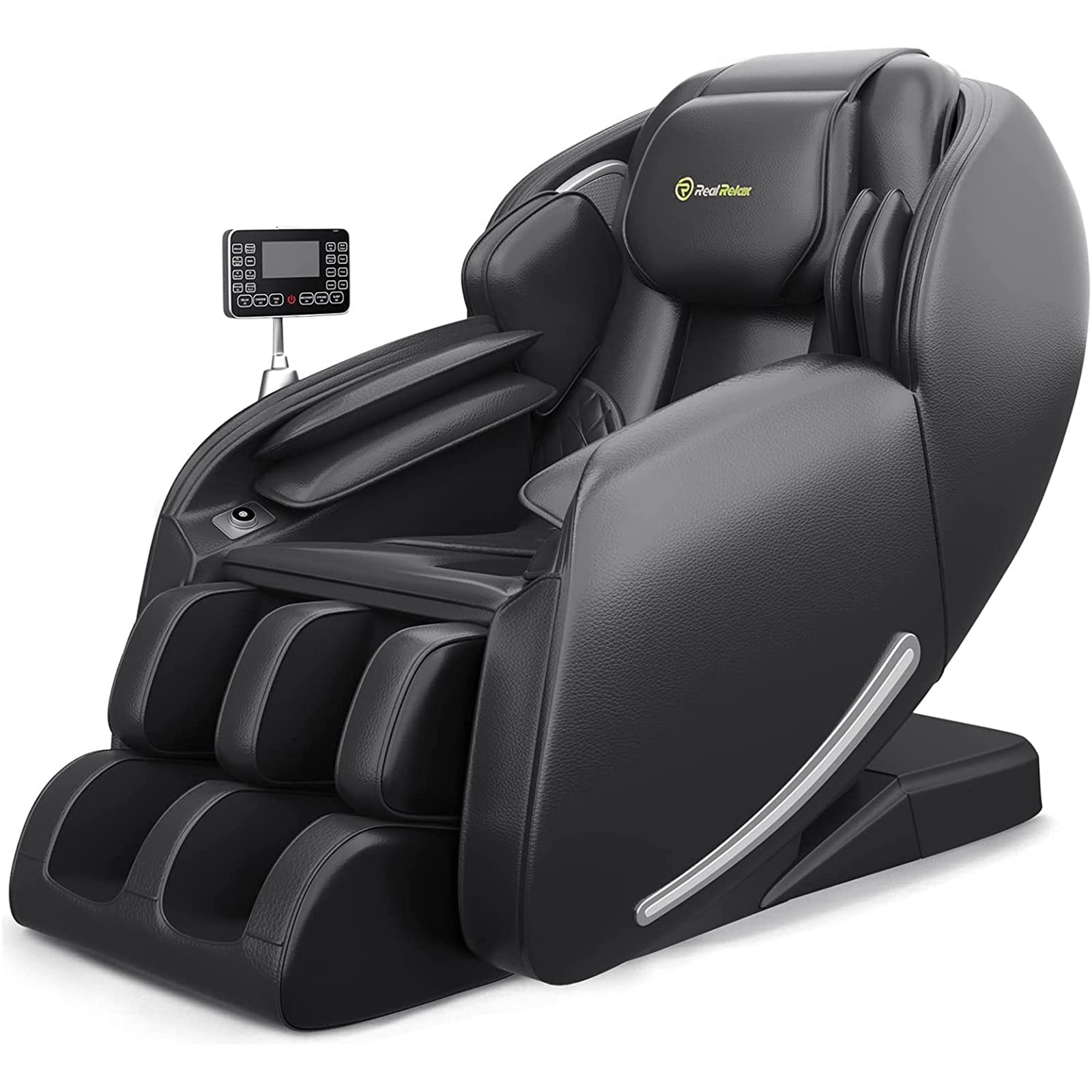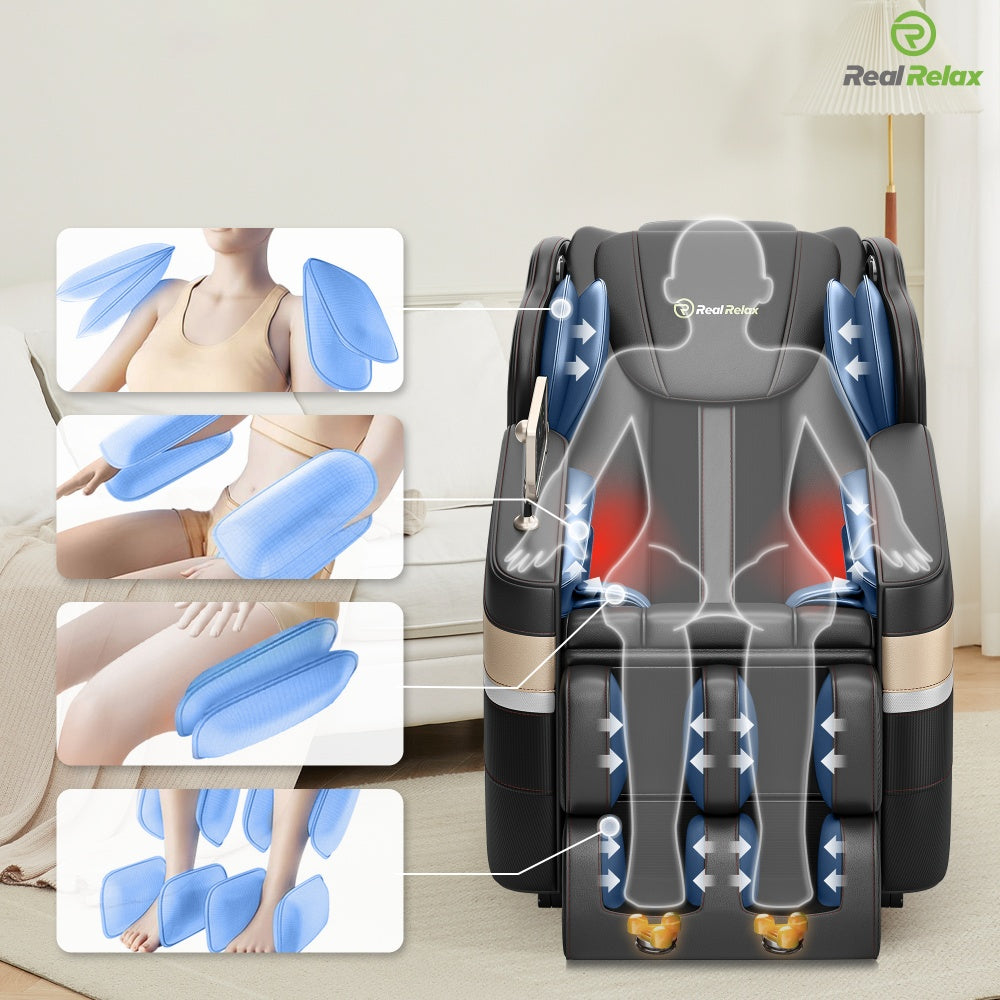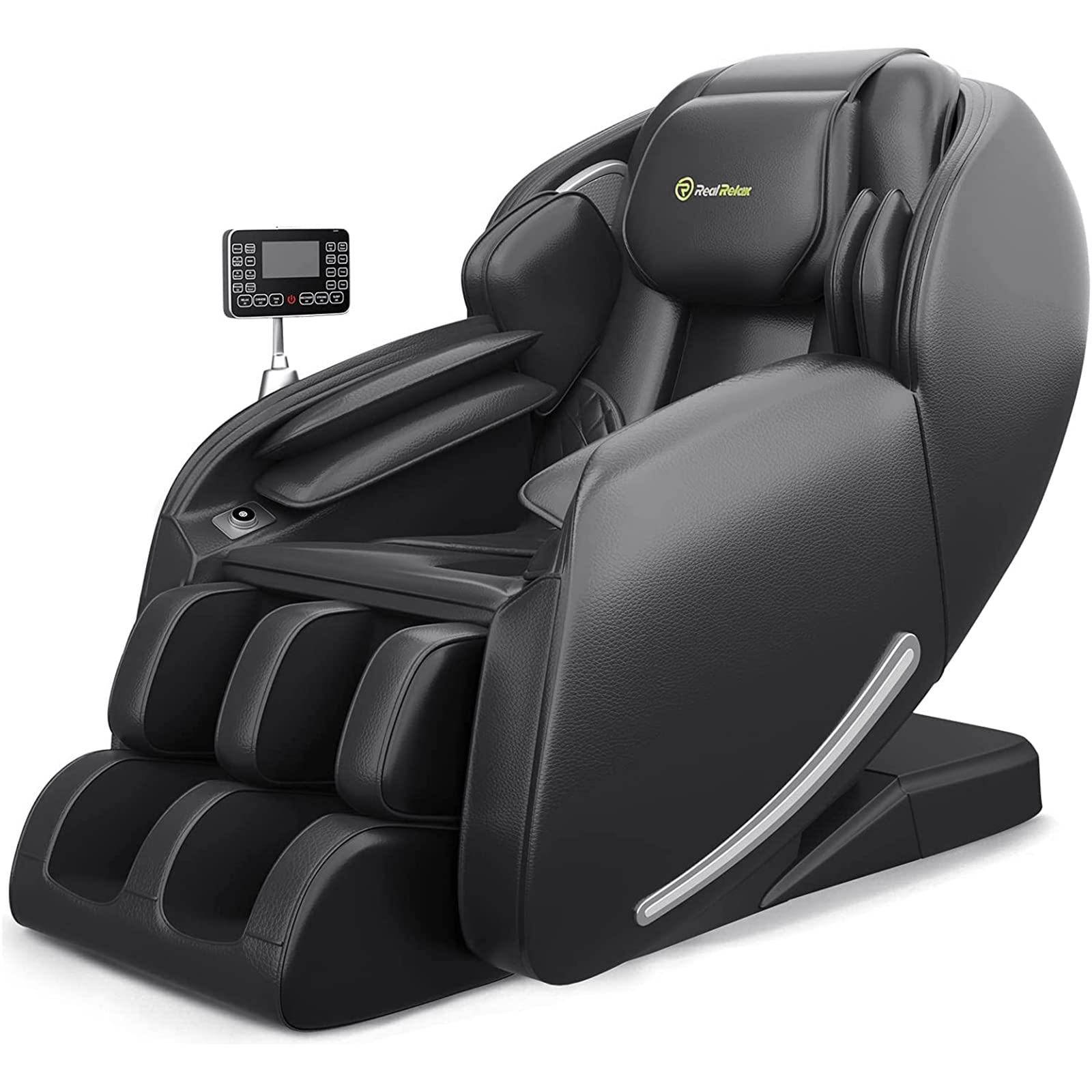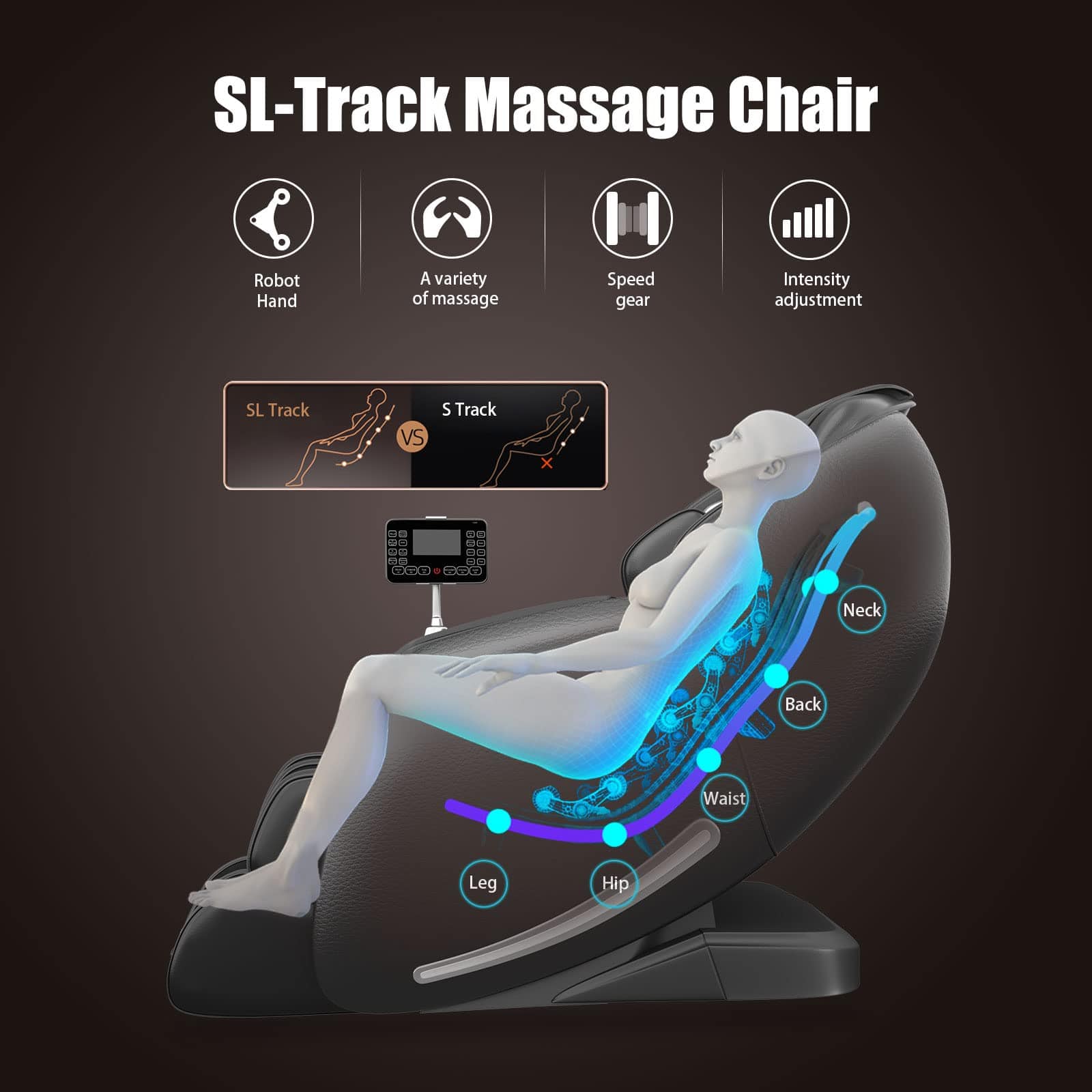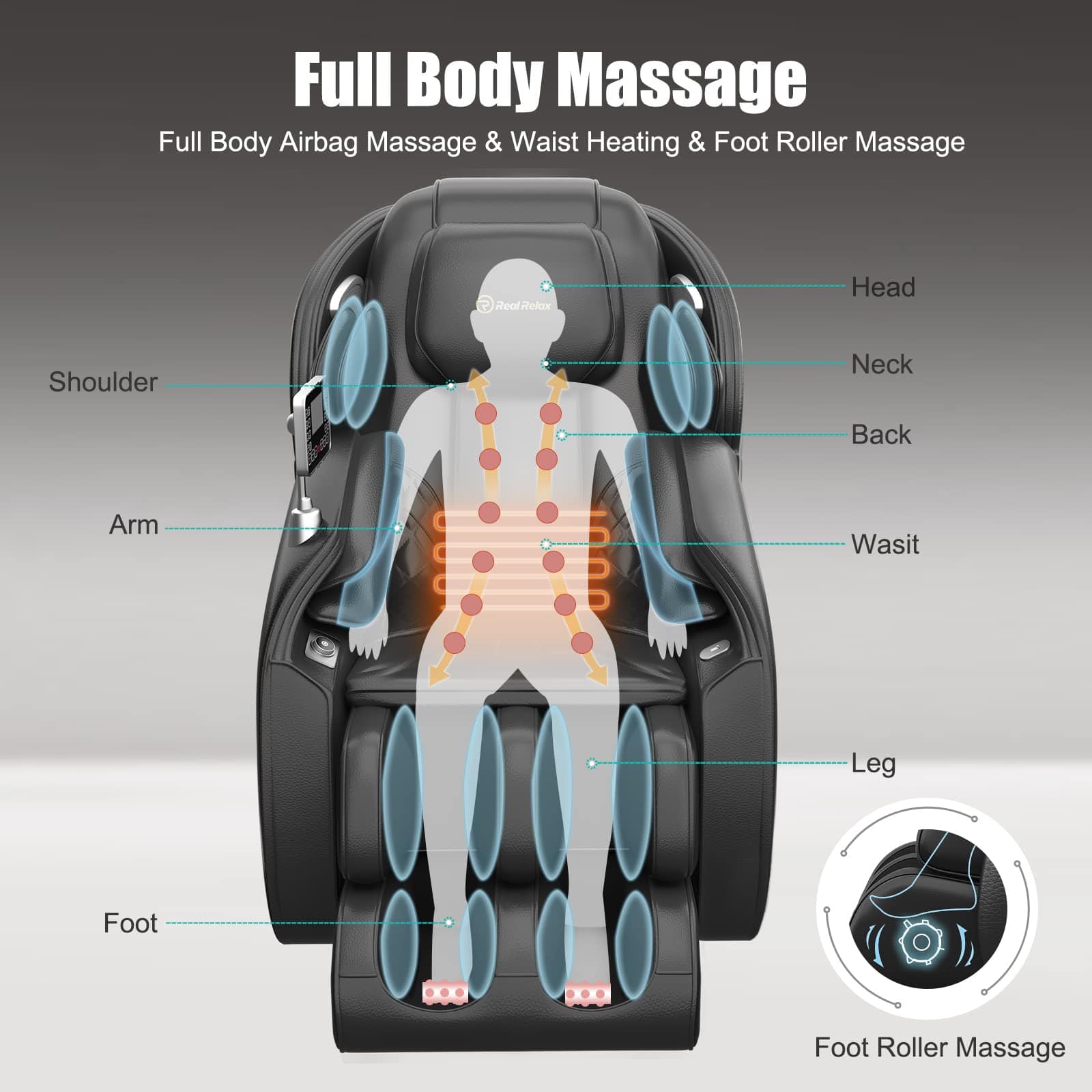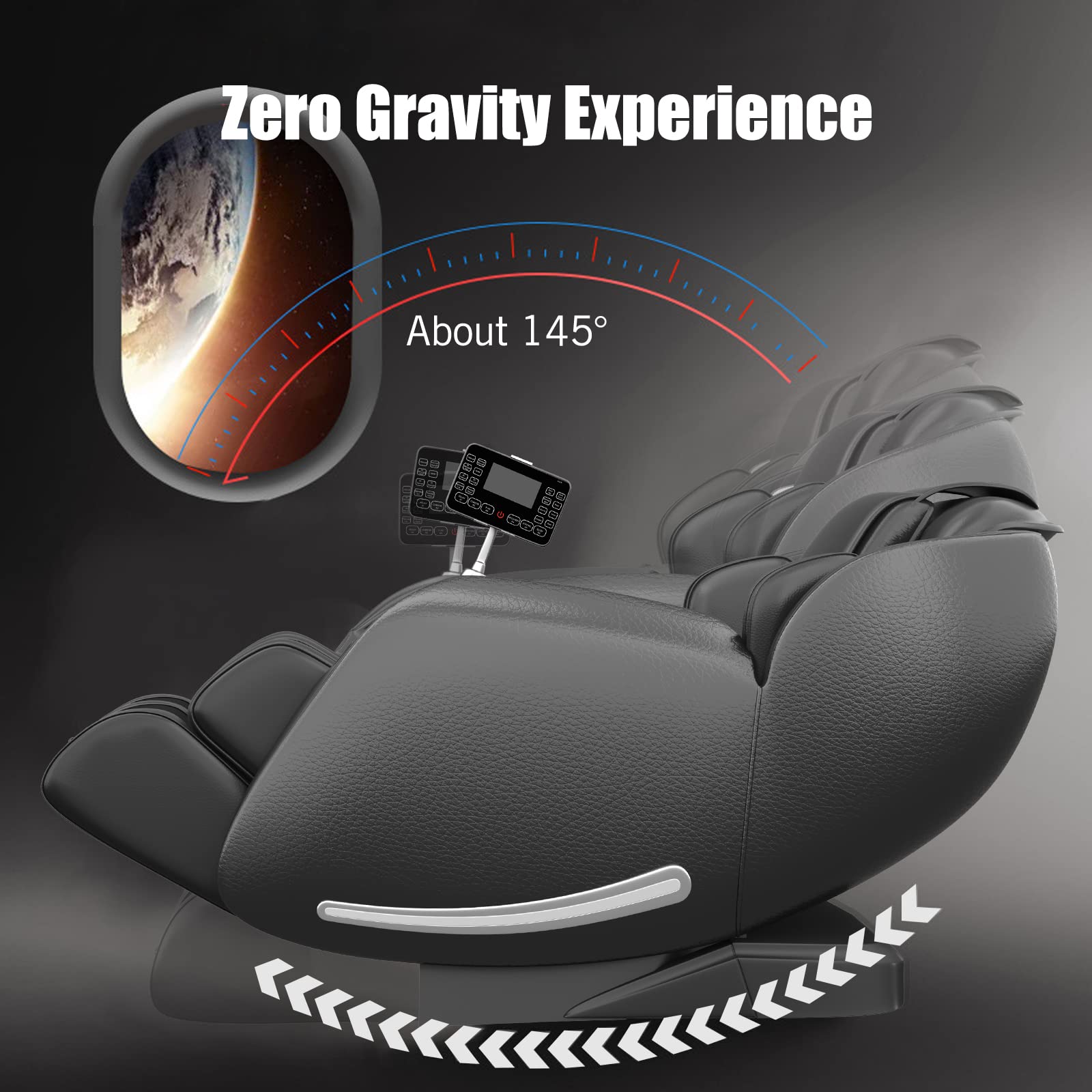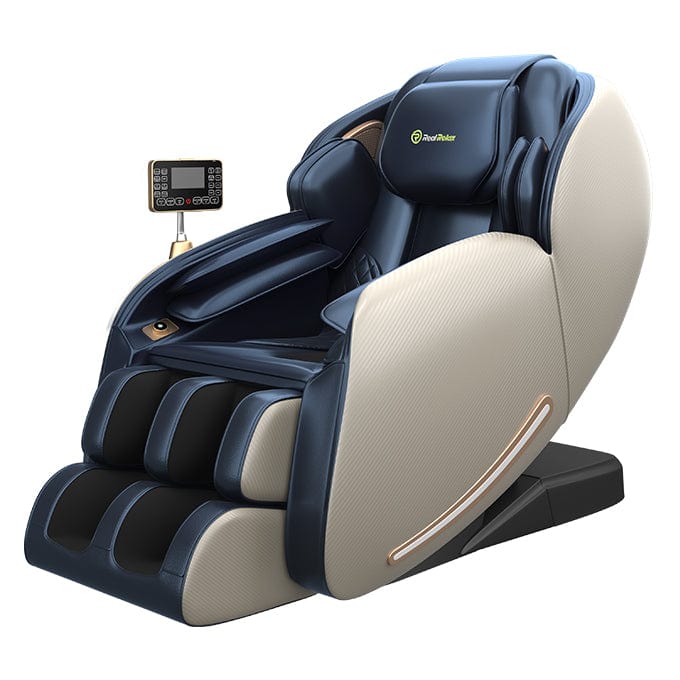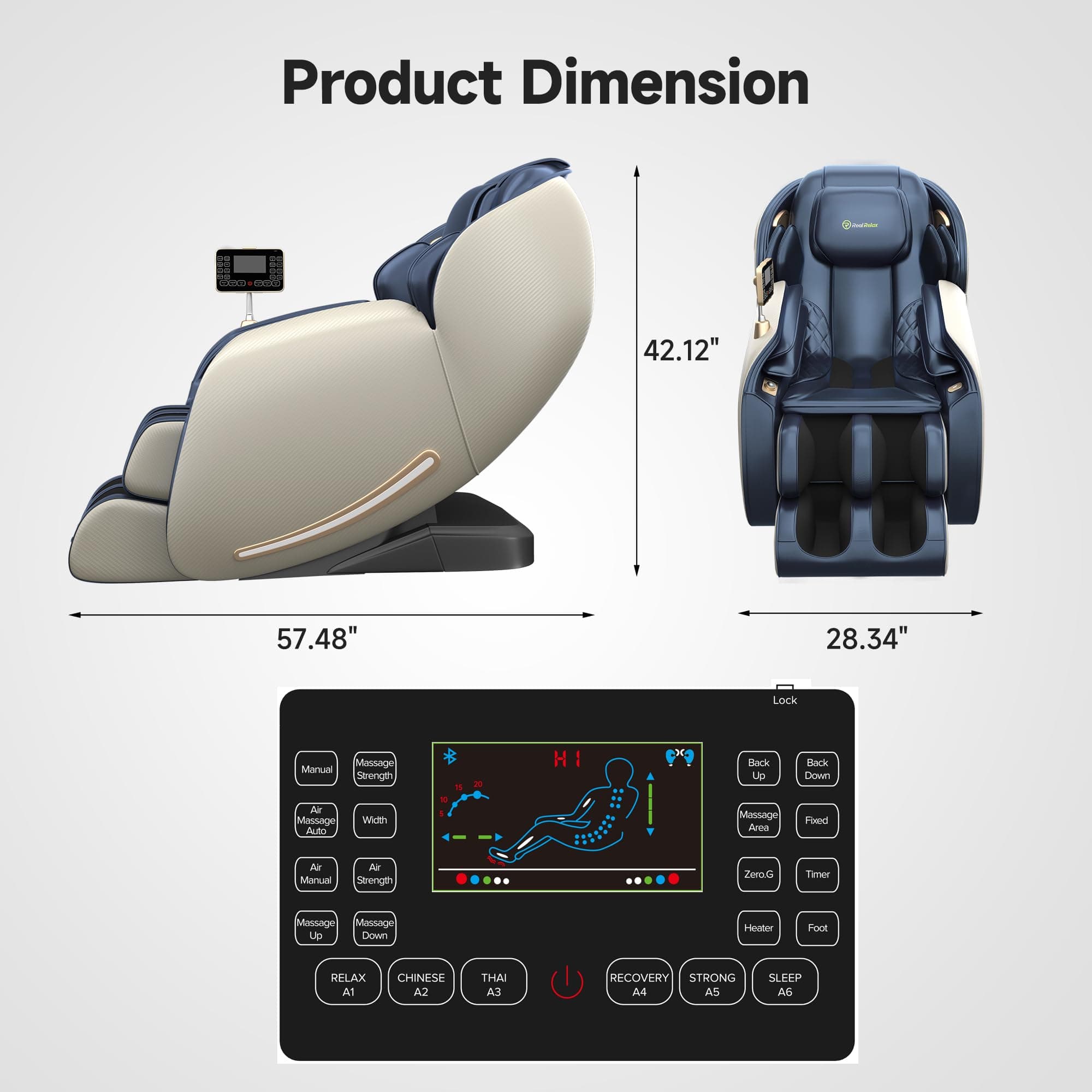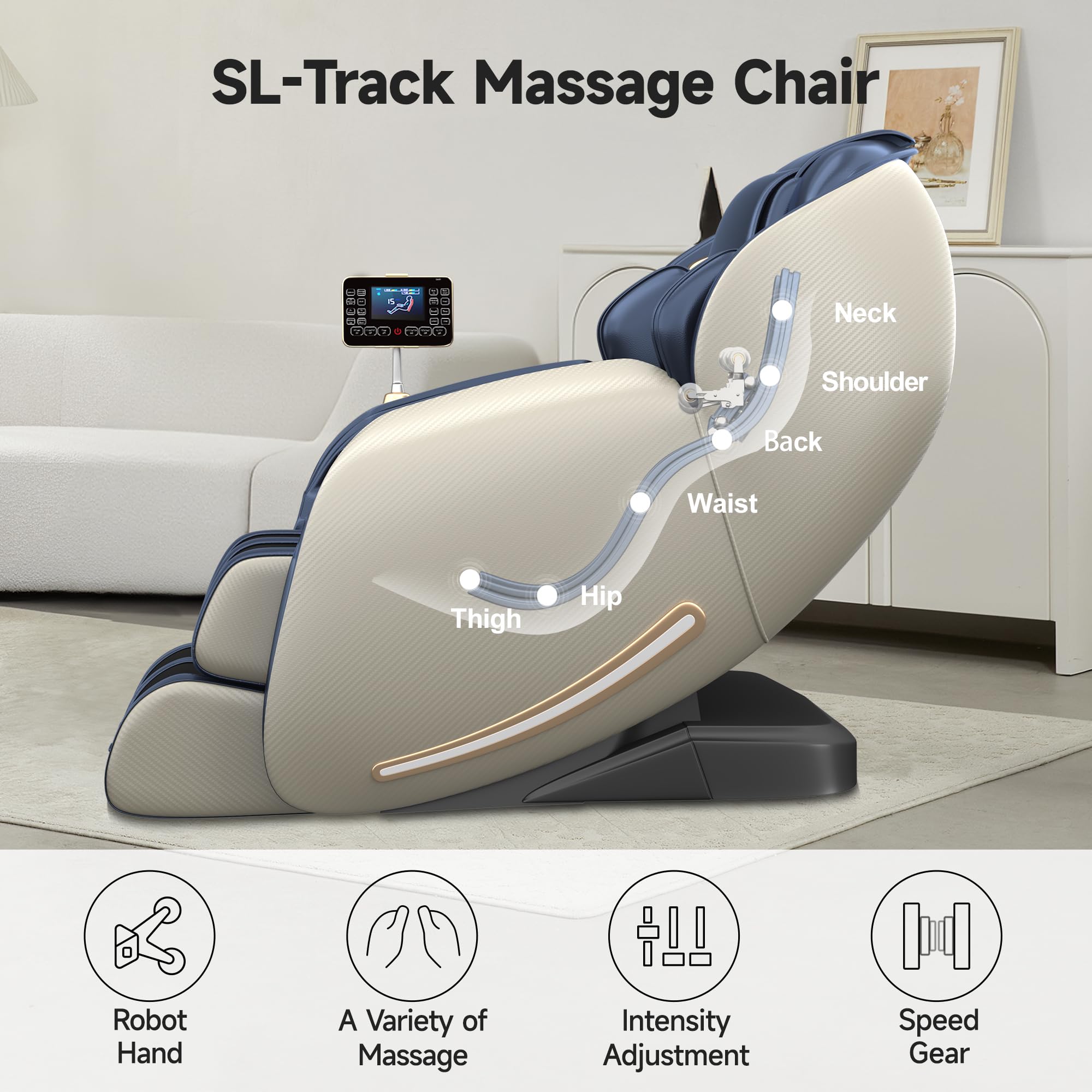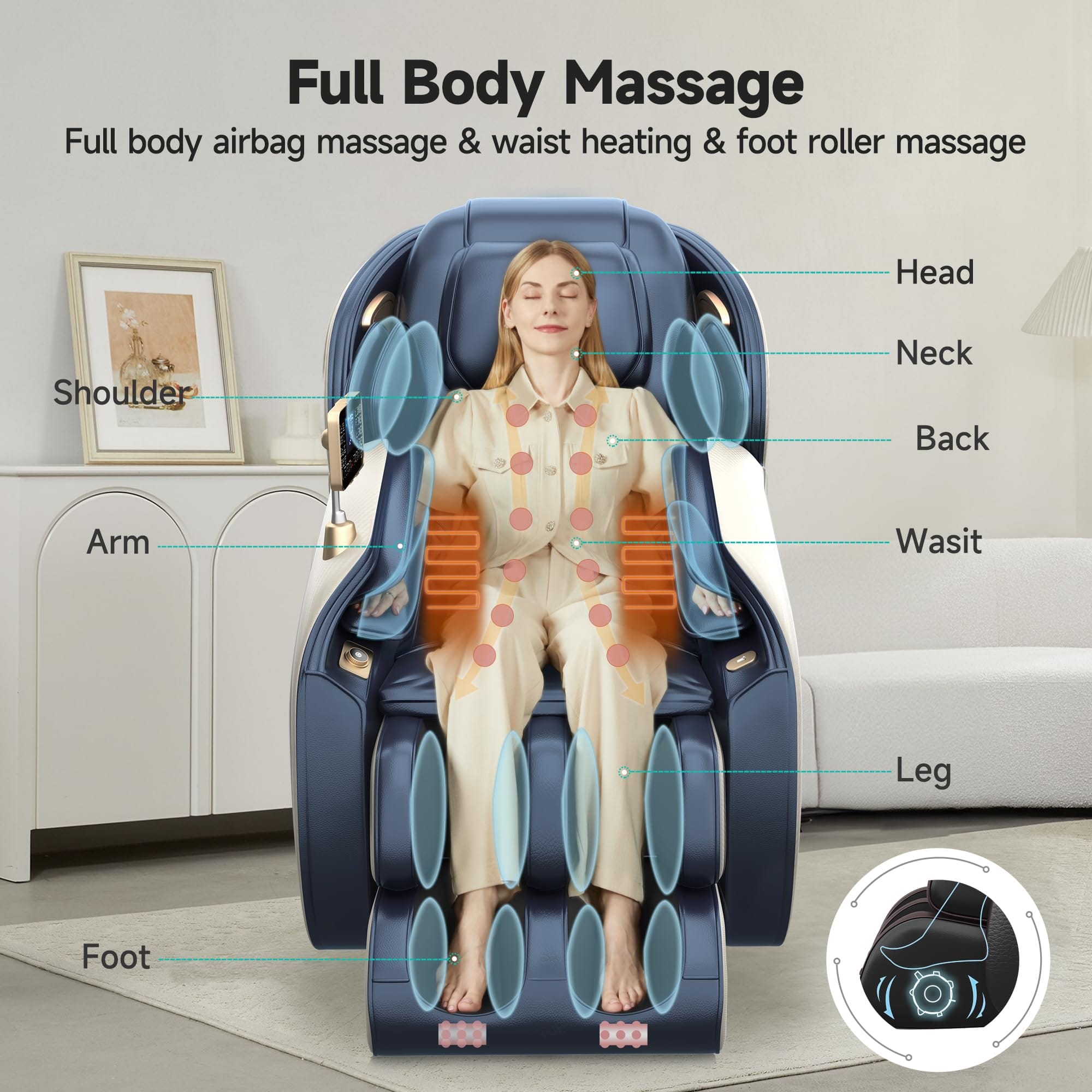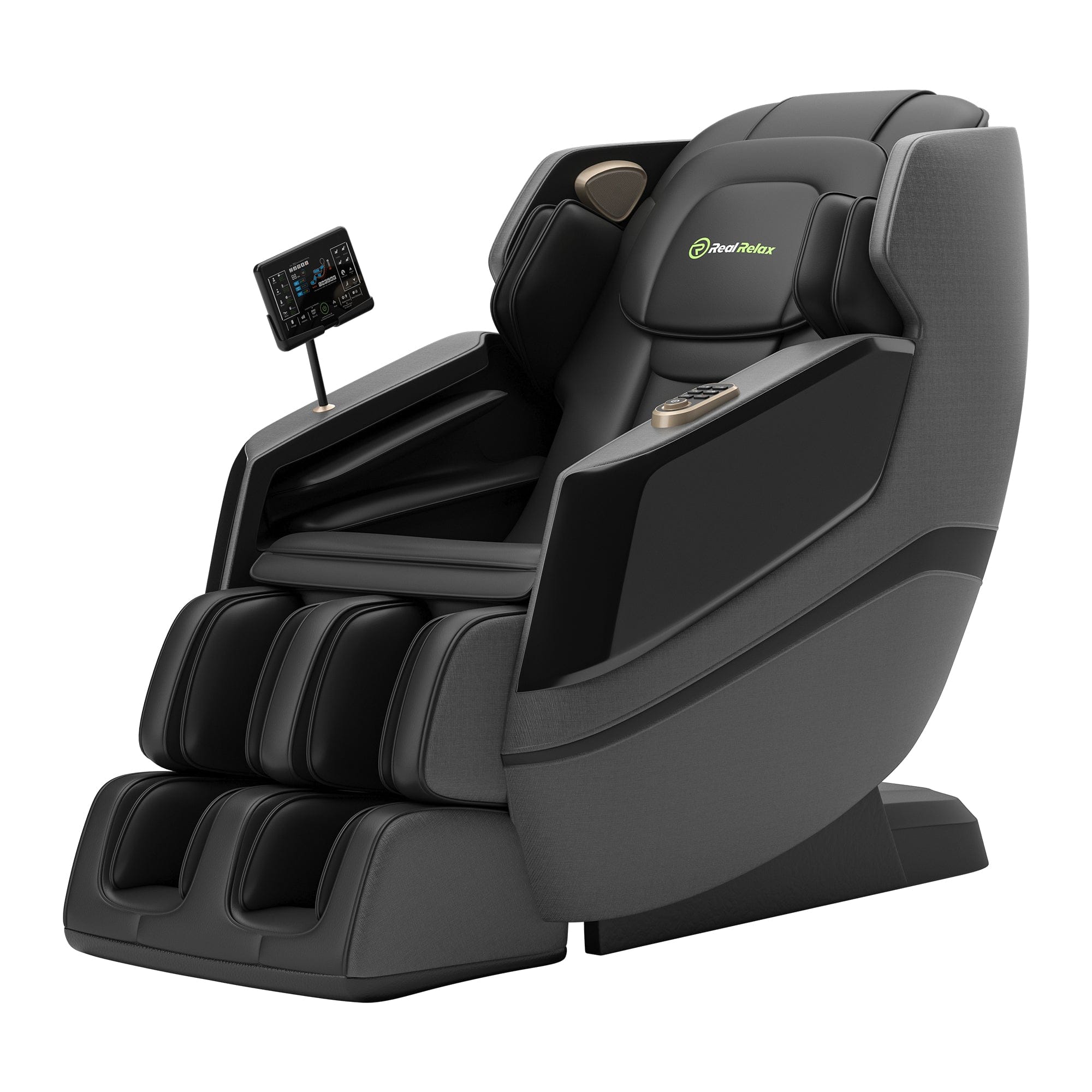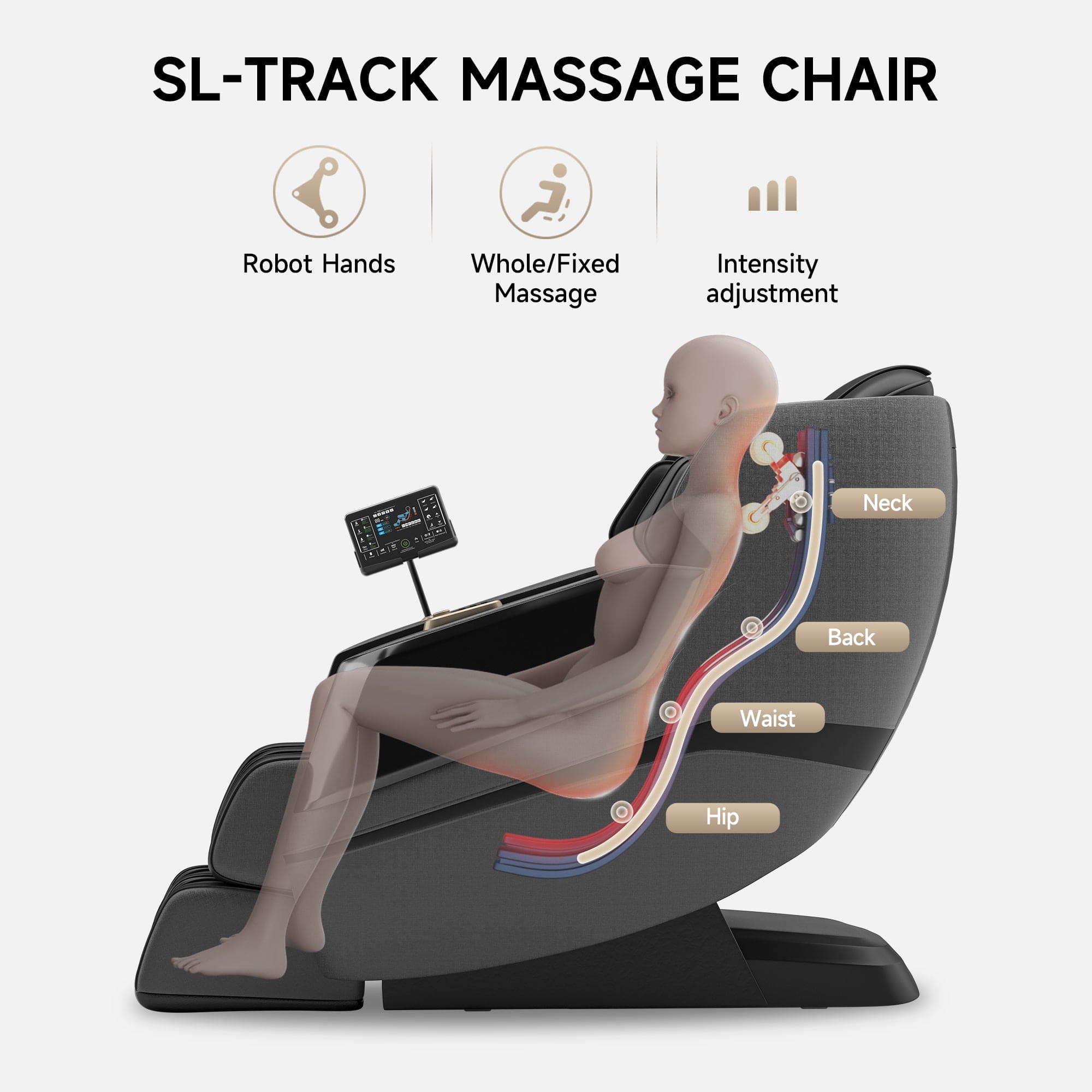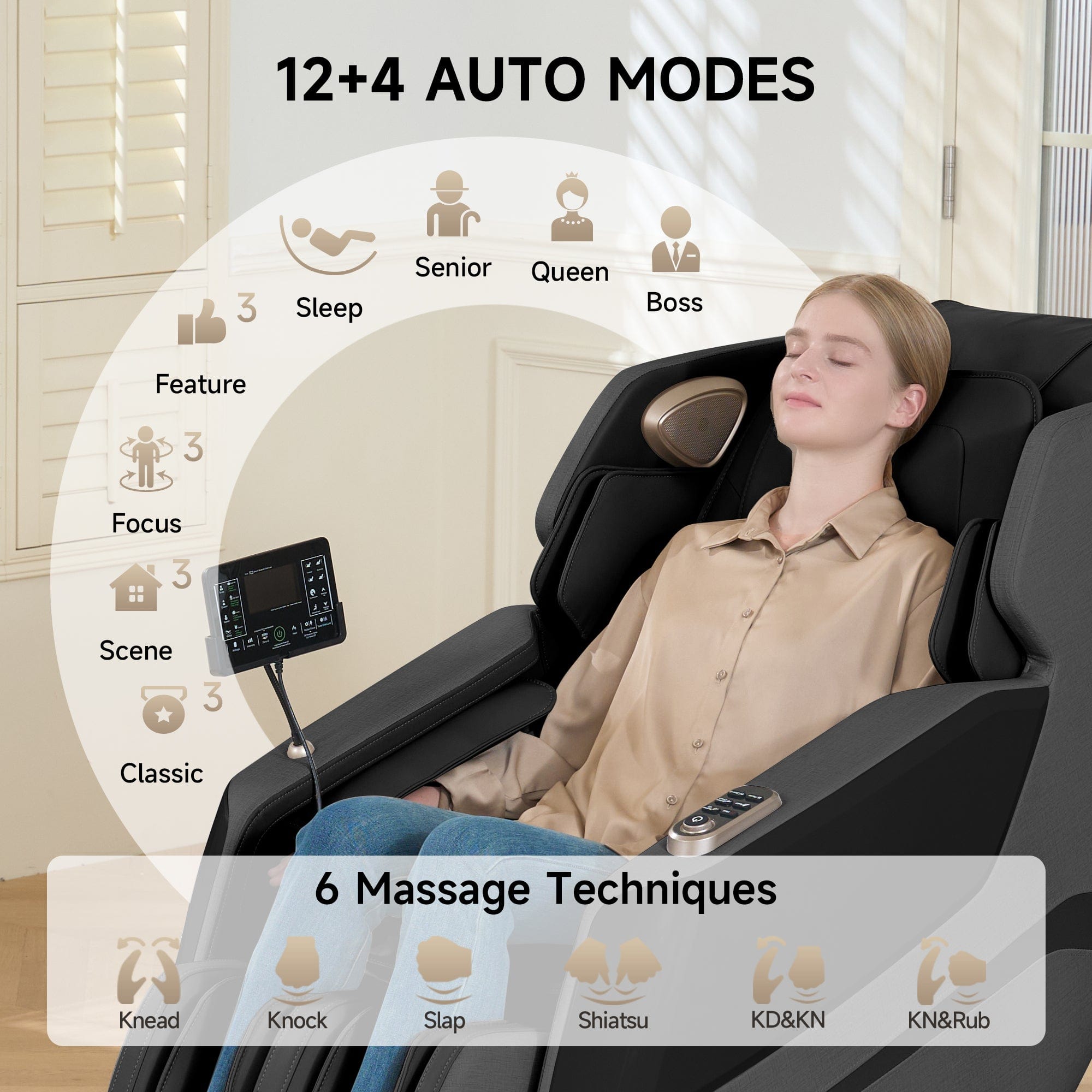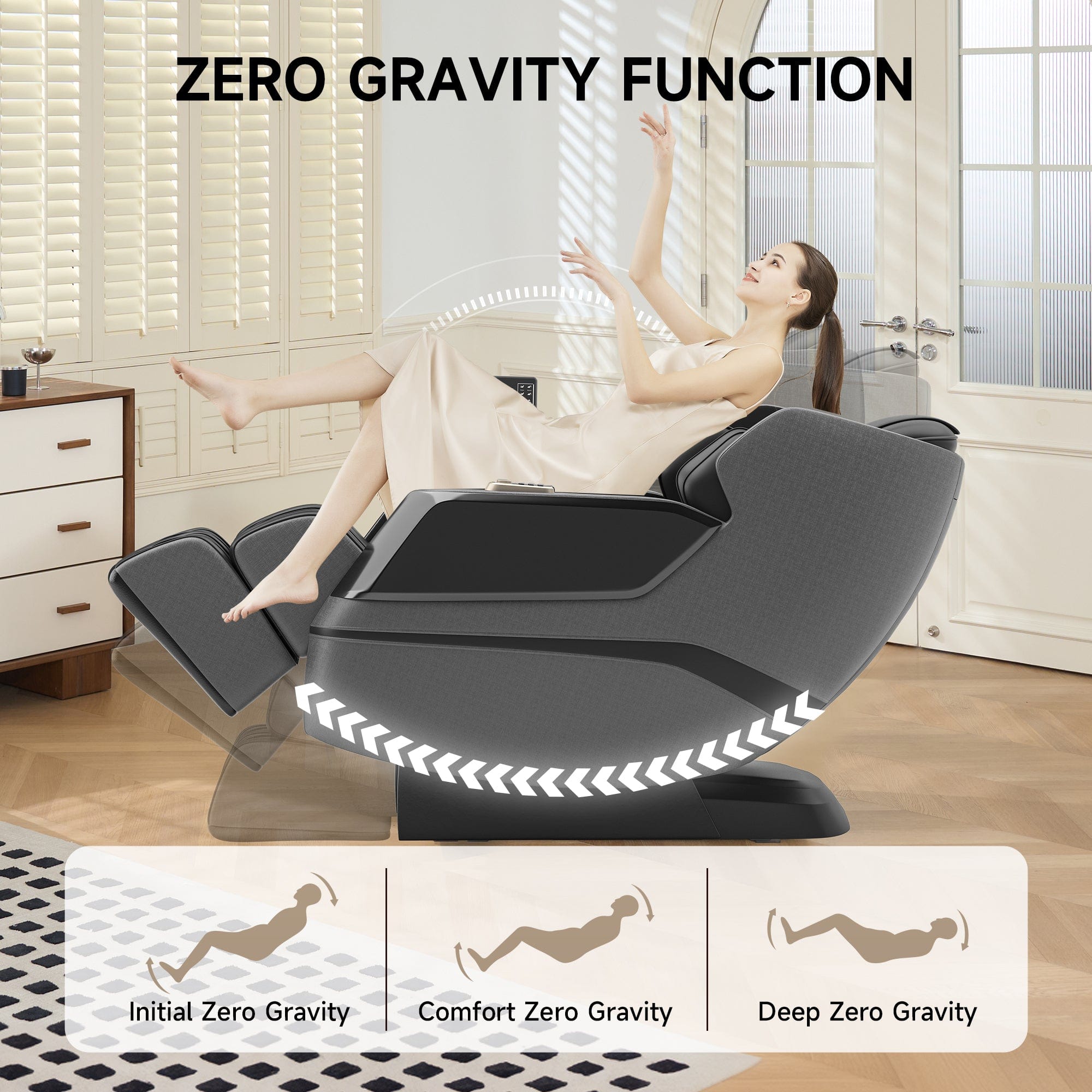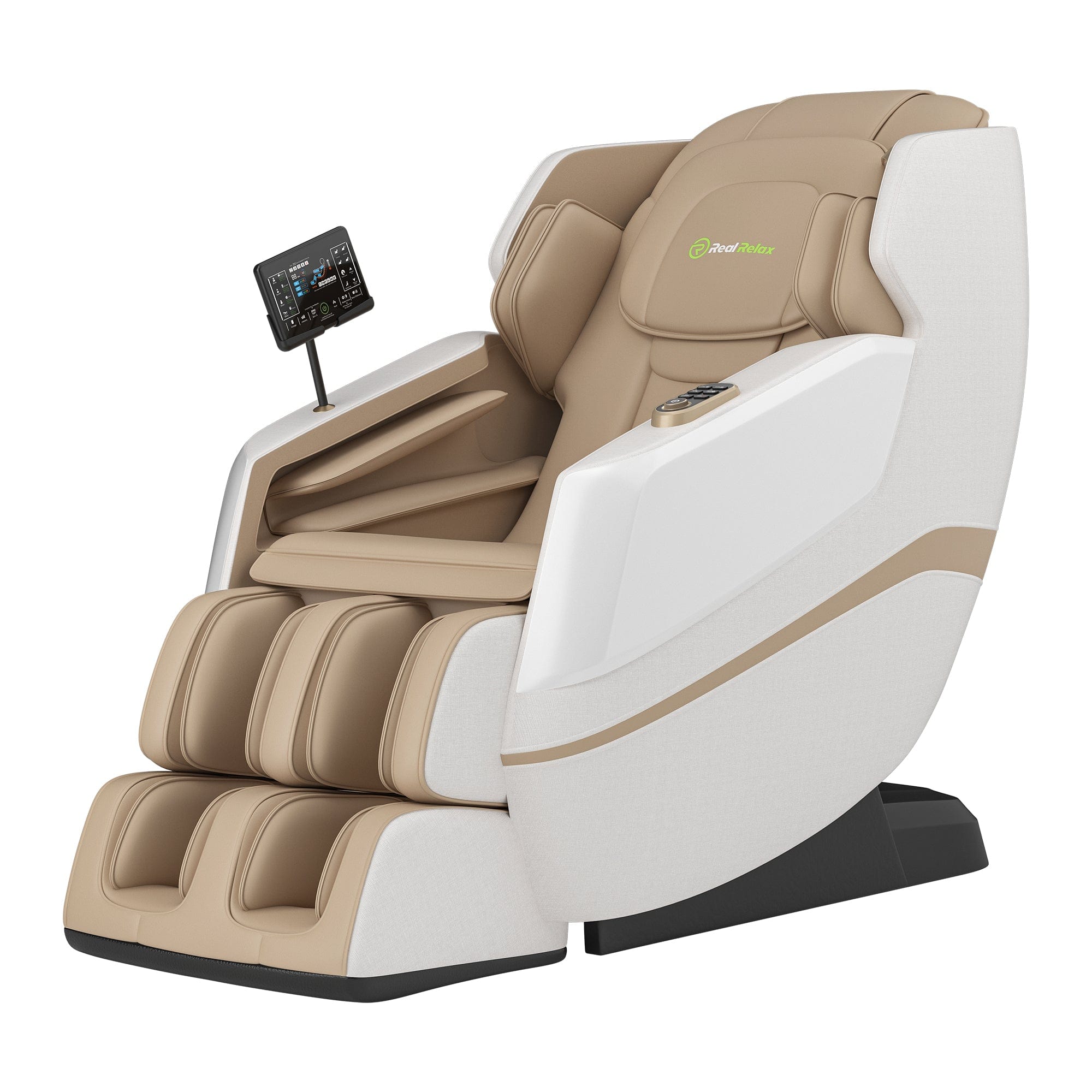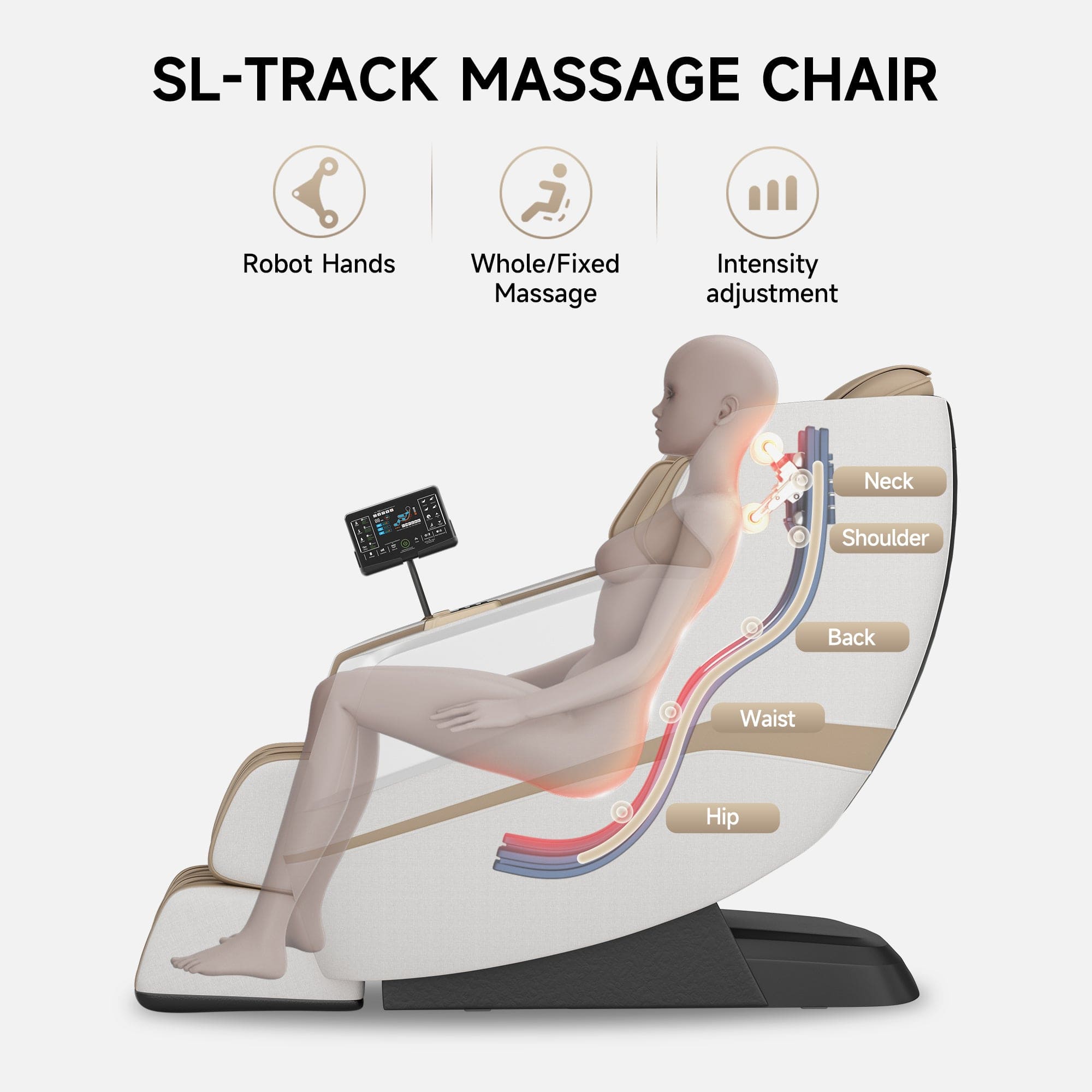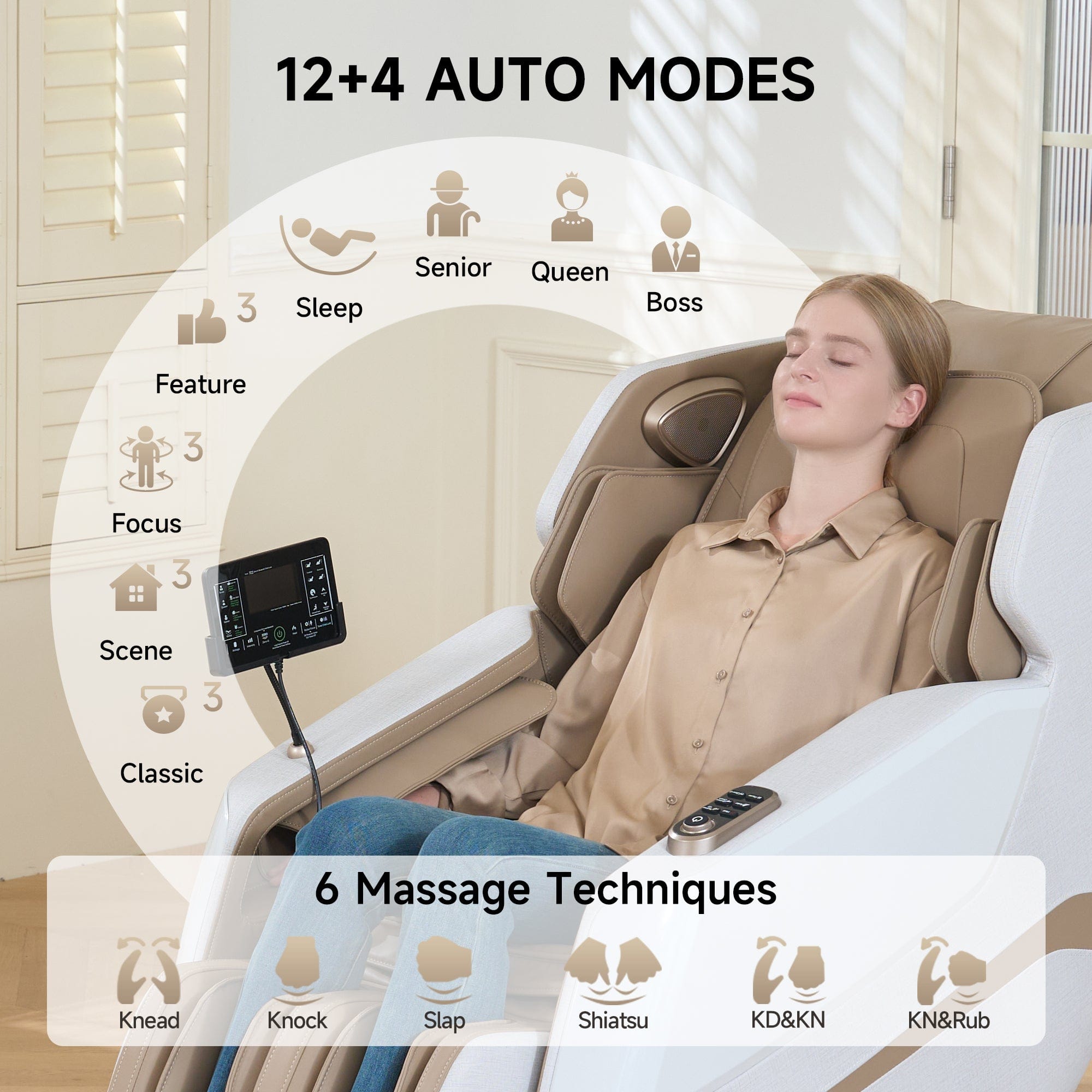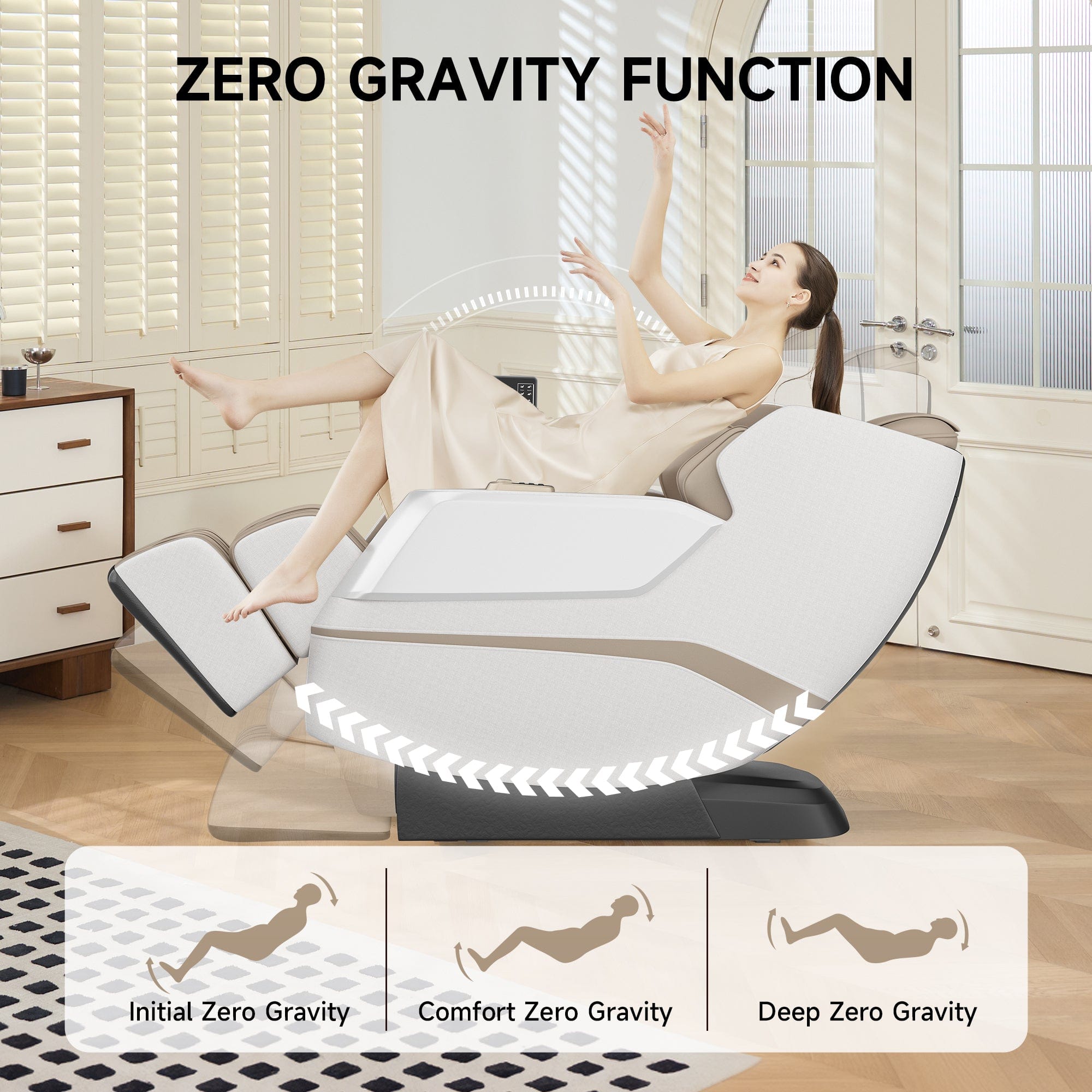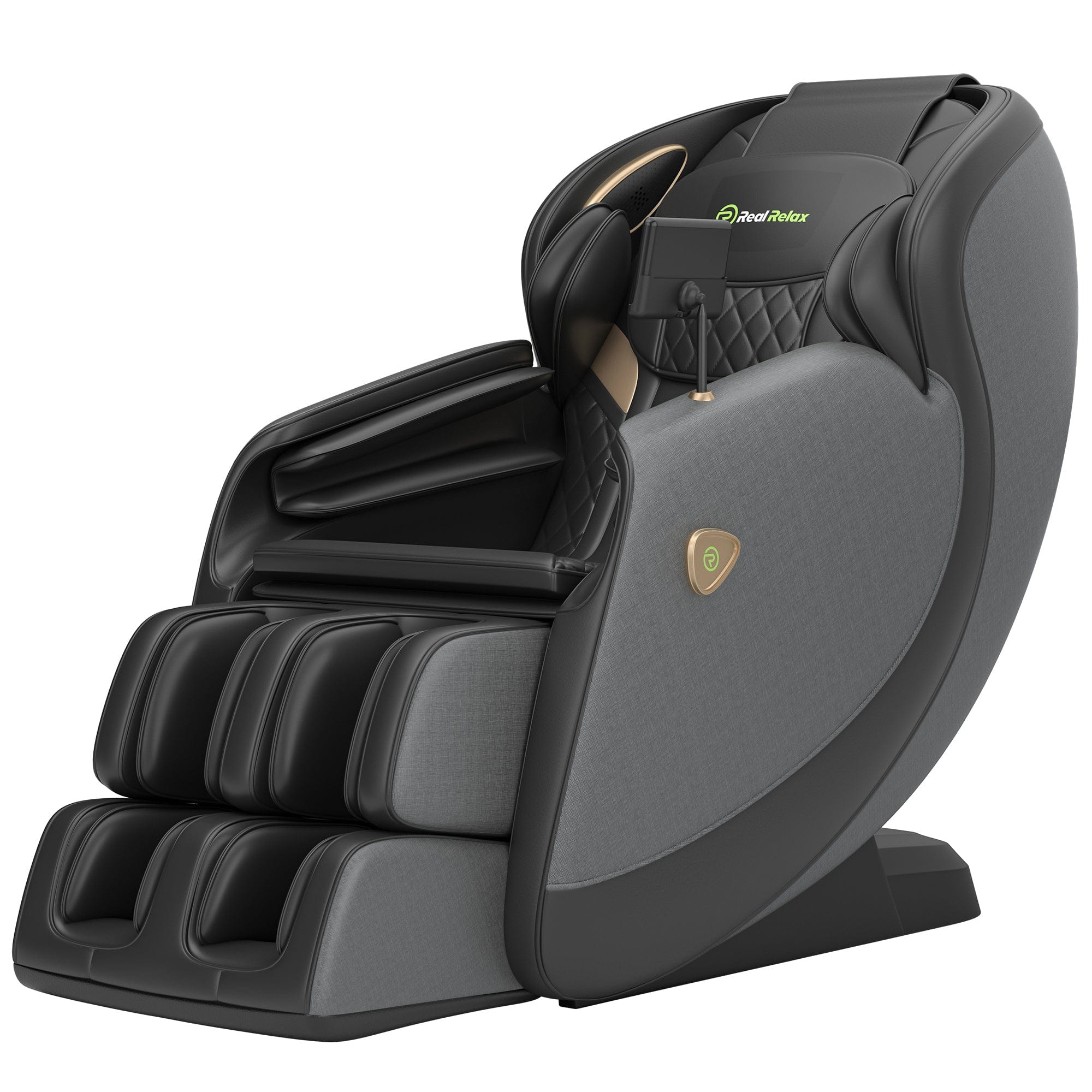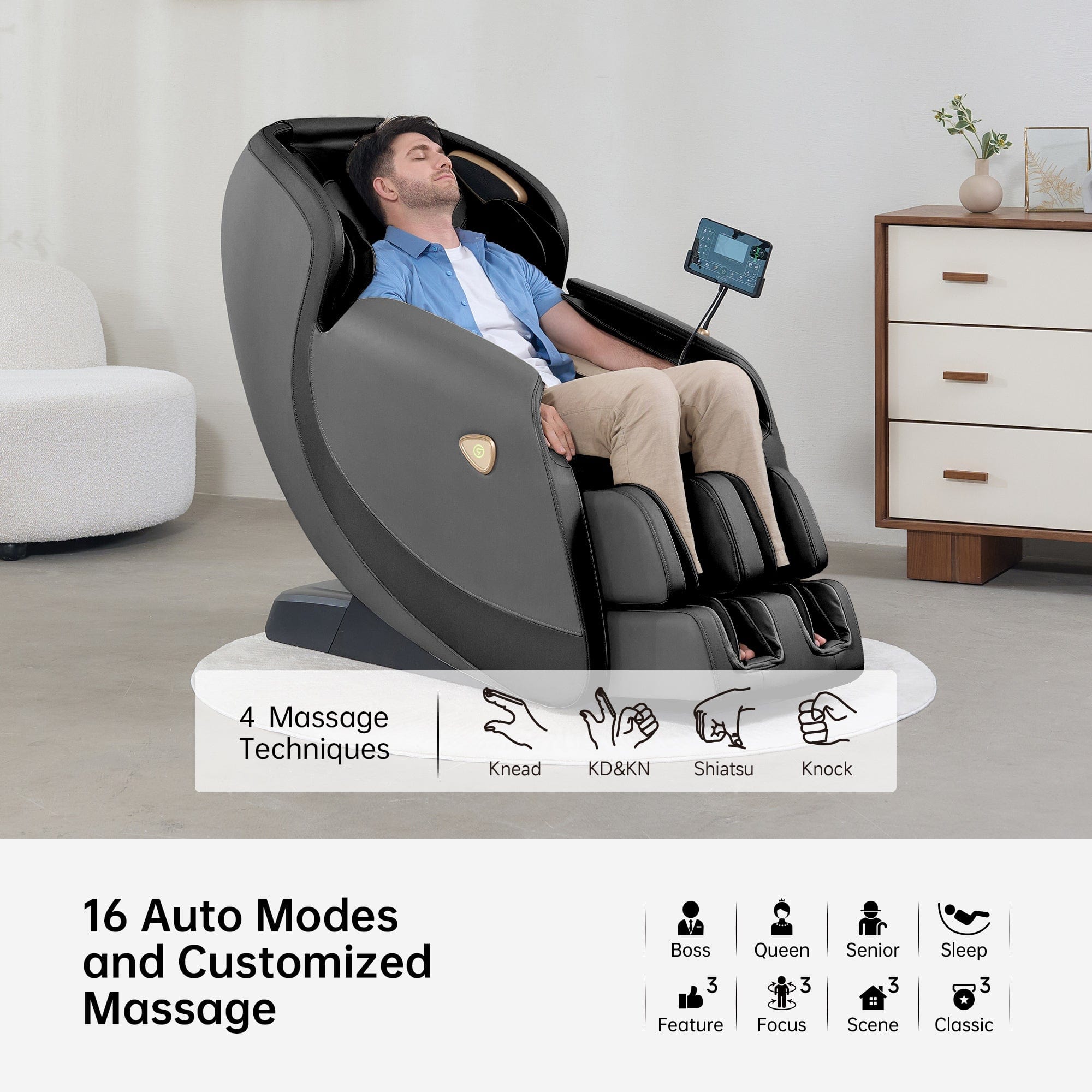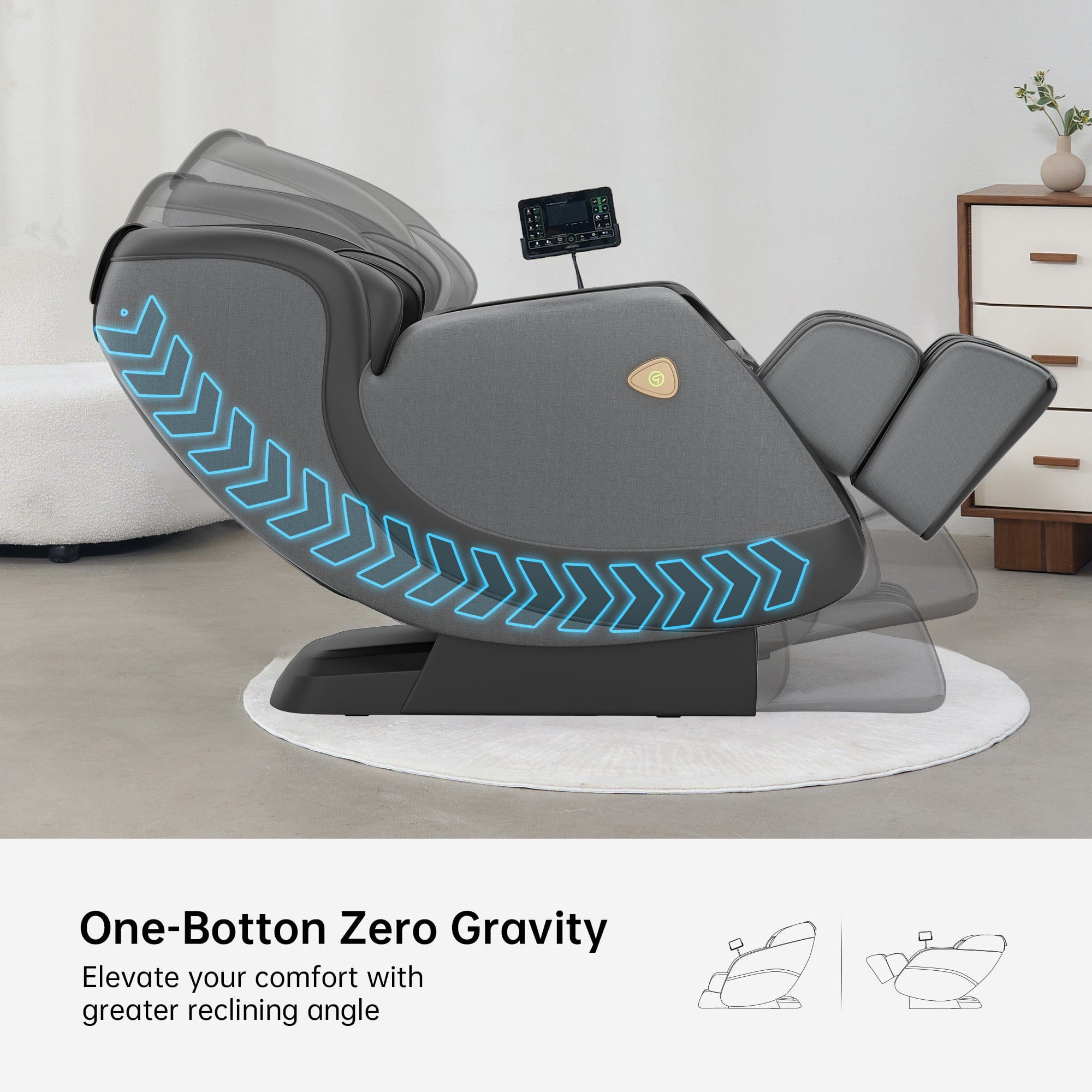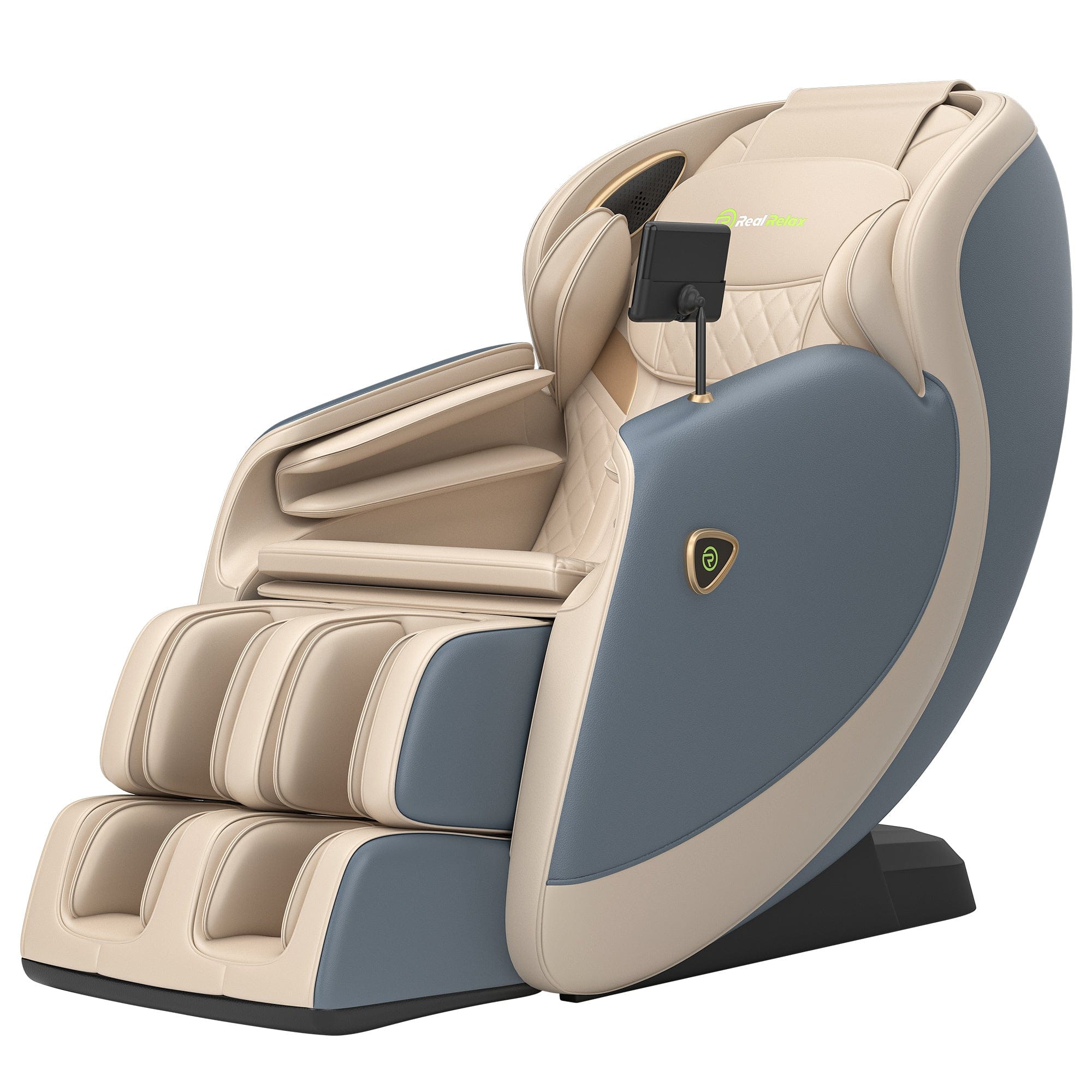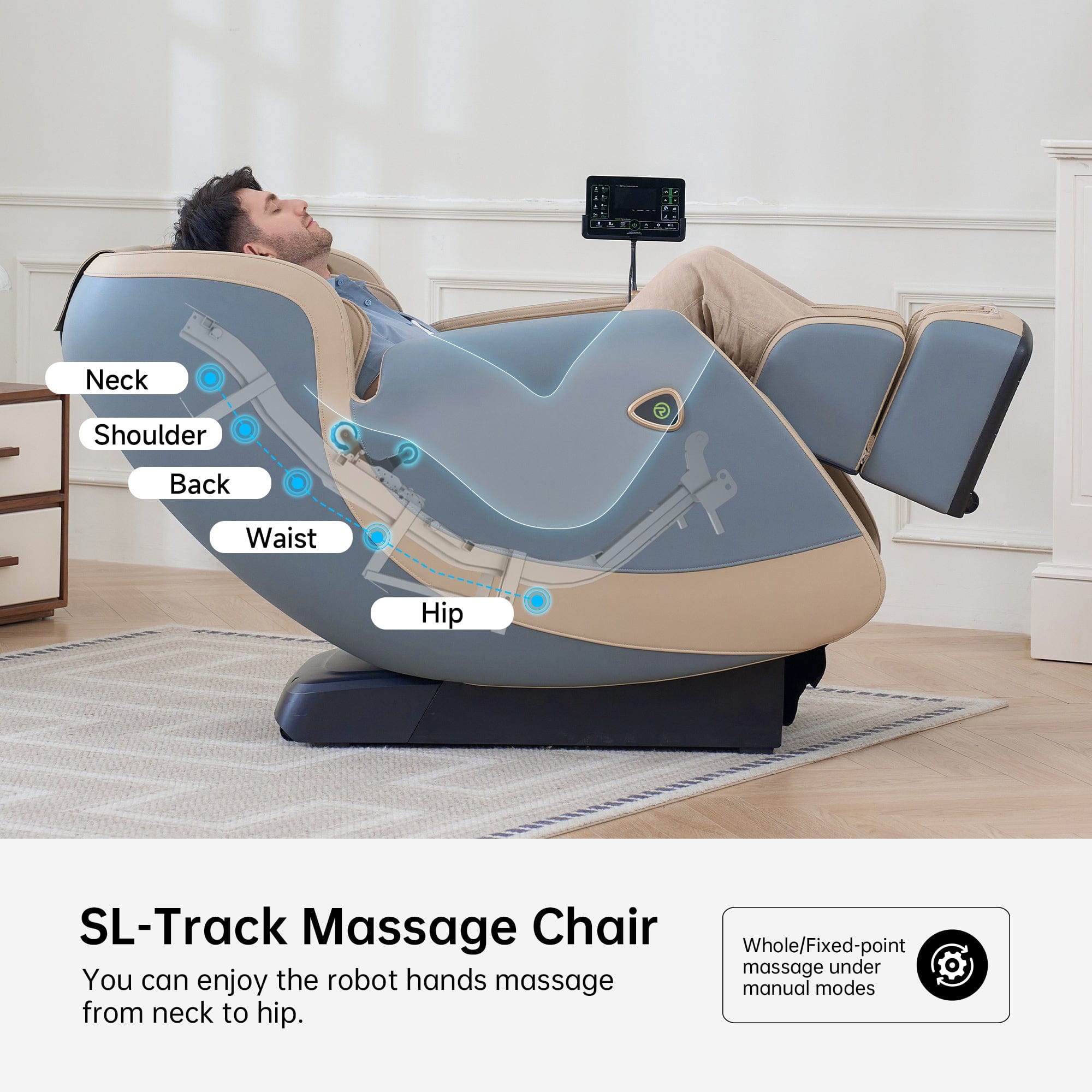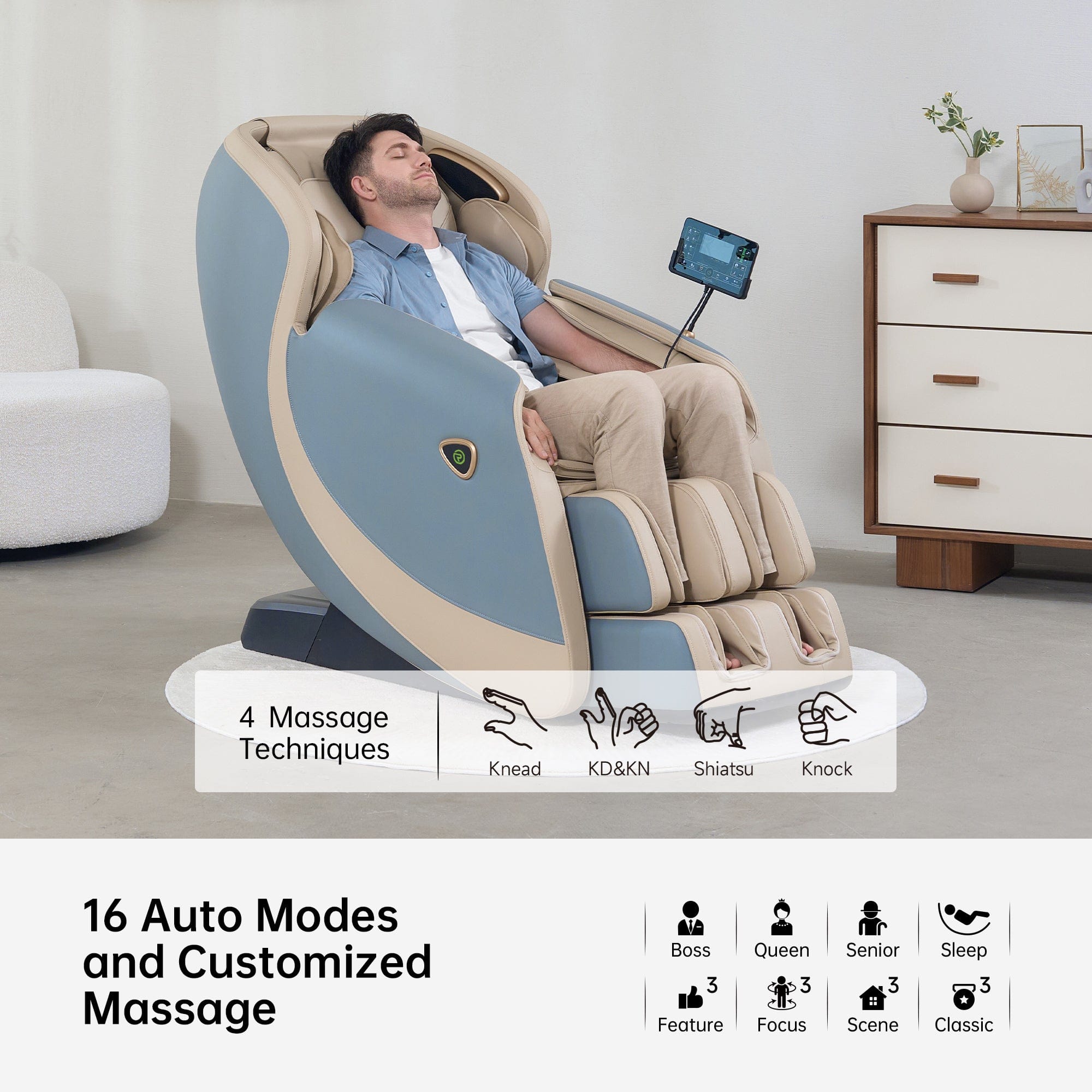Sciatica, a common condition characterized by radiating pain along the sciatic nerve, can significantly impact an individual's quality of life. Traditionally, treatment options have included physical therapy, medication, and manual massages. However, the advent of massage chairs has introduced a new dimension to managing sciatica symptoms. We will explore the potential benefits of massage chairs for sciatica relief, their mechanisms of action, and the specific features that contribute to their effectiveness.
How Massage Chairs Help in Sciatica Relief
Sciatica is often caused by compression or irritation of the sciatic nerve, leading to pain that can extend from the lower back, through the buttocks, and down the leg. Massage chairs offer a non-invasive approach to alleviate this discomfort through various mechanisms:
Muscle Relaxation Techniques
Massage chairs are equipped with rollers, kneaders, and percussive devices designed to mimic the actions of a human massage therapist. These mechanisms target tight muscles, which can contribute to nerve compression and subsequent pain. By relaxing these muscles, massage chairs can improve circulation and reduce inflammation, thereby alleviating sciatic pain.
Relief from Muscle Tension
The muscles surrounding the sciatic nerve, when tense, can exacerbate sciatica symptoms. Massage chairs are designed to target these areas, providing temporary relief by releasing muscle tension and reducing the pressure on the nerve.
Stress Reduction
Stress is known to exacerbate pain conditions, including sciatica. Massage chairs promote relaxation, which in turn can reduce the levels of cortisol, a stress hormone that can contribute to inflammation. By reducing stress, massage chairs can help manage the overall experience of sciatica symptoms.
Complementary Treatment
While massage chairs offer benefits, they should be part of a comprehensive treatment plan that includes medical advice and therapy. Incorporating massage chair sessions with physical therapy and medication can lead to a more effective management of sciatica.

Real Relax BS 04 Massage Chair for Sciatica Relief
Important Features of Massage Chairs for Sciatica Relief
Massage chairs come with a variety of features that can be particularly beneficial for sciatica sufferers:
Heated Massage Chairs
The warmth from heated massage chairs can penetrate deep into the muscles, increasing blood flow and reducing muscle tension. This heat therapy can be especially beneficial for sciatica patients, as it can help to soothe the affected areas and provide pain relief.
Air Bags Massage Chairs
These full body air bags massage chairs use airbags to apply compression and massage to the body. The controlled inflation and deflation of these airbags can simulate the hands of a massage therapist, providing a targeted massage that can help to relieve tension and improve circulation in the lower back and legs.
Vibrating Massage Chairs
Vibration therapy in massage chairs offers a unique approach to massage, with the potential to reduce muscle stiffness and promote relaxation. The varied vibrations can target specific areas, making it an effective tool for sciatica relief.
Benefits of Massage Chairs for Managing Sciatica
Massage chairs offer several benefits that can be particularly advantageous for individuals with sciatica:
Targeted and Adjustable Massages
One of the main advantages of adjustable massage chair is their ability to target specific areas of the body. For sciatica sufferers, this means that the lower back, hips, and buttocks can be specifically targeted to provide relief where it's needed most.
Convenience and Comfort
Massage chairs provide a convenient and comfortable alternative to traditional massages. Users can enjoy a massage in the privacy of their own home, without the need for appointments or travel. This convenience can be especially beneficial for those with mobility issues related to sciatica.
Relief of Muscle Tension and Relaxation
Beyond the immediate relief of muscle tension, massage chairs can also provide a sense of relaxation that is crucial for managing chronic pain conditions like sciatica. By improving range of motion and decreasing inflammation, massage chairs can contribute to a reduction in sciatica symptoms.
Combine Massage Chair Therapy with Other Treatments
For optimal results, massage chair therapy should be integrated with other treatments. This holistic approach can include physical therapy, medication, hot and cold therapy, chiropractic care, acupuncture, and lifestyle changes. Each of these treatments can play a role in managing sciatica symptoms, and when combined with massage chair therapy, they can provide a comprehensive treatment plan.



